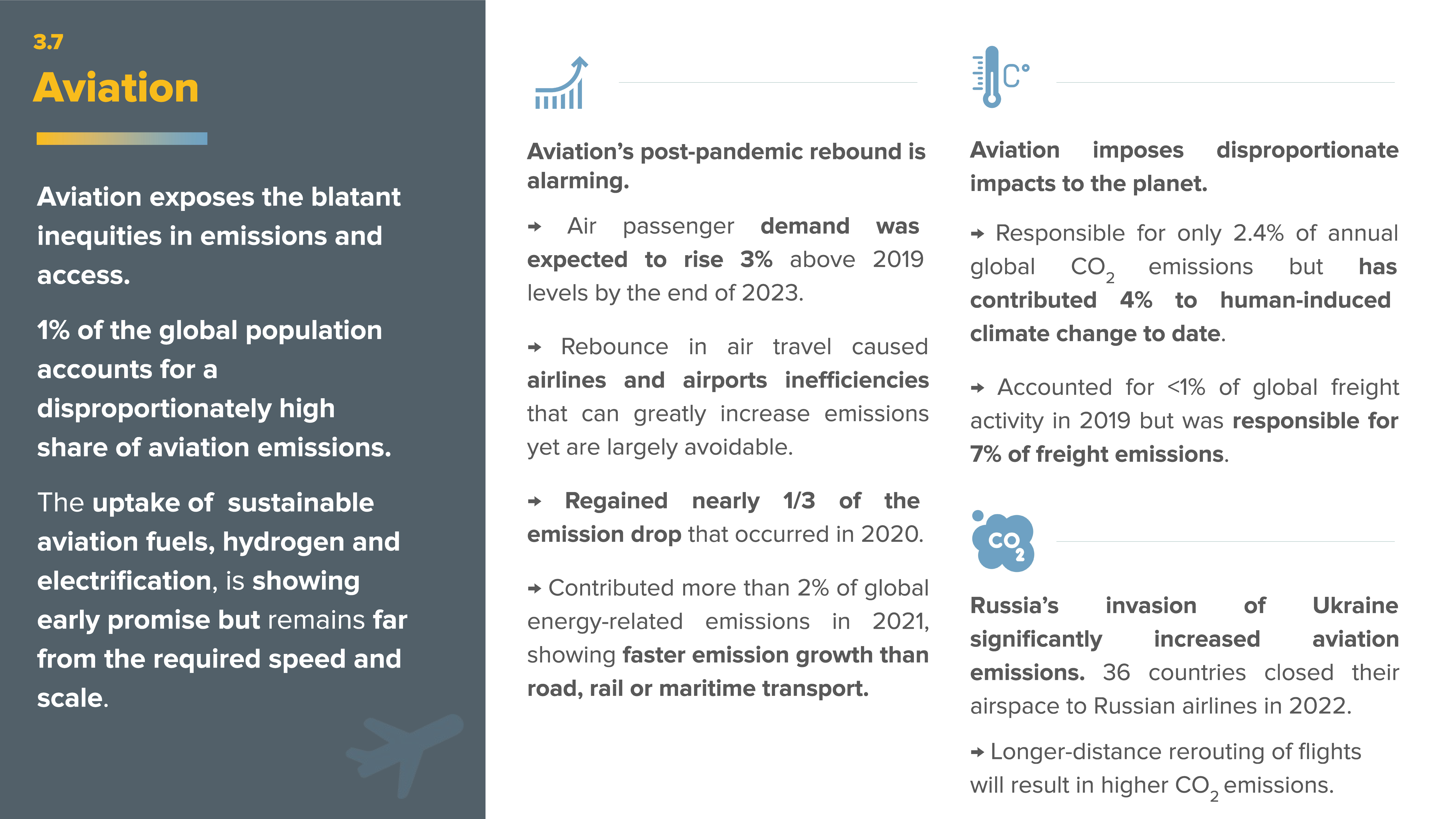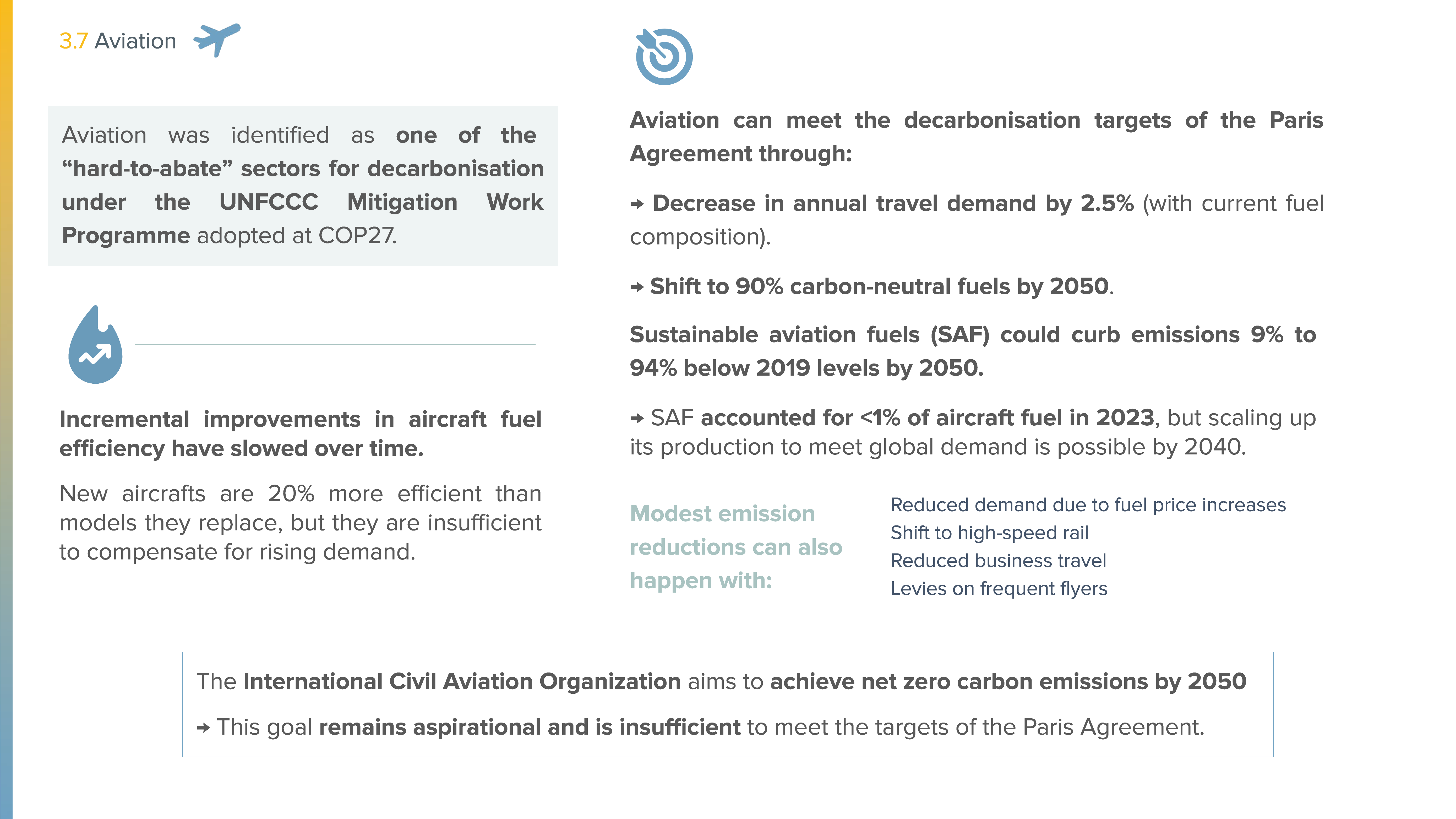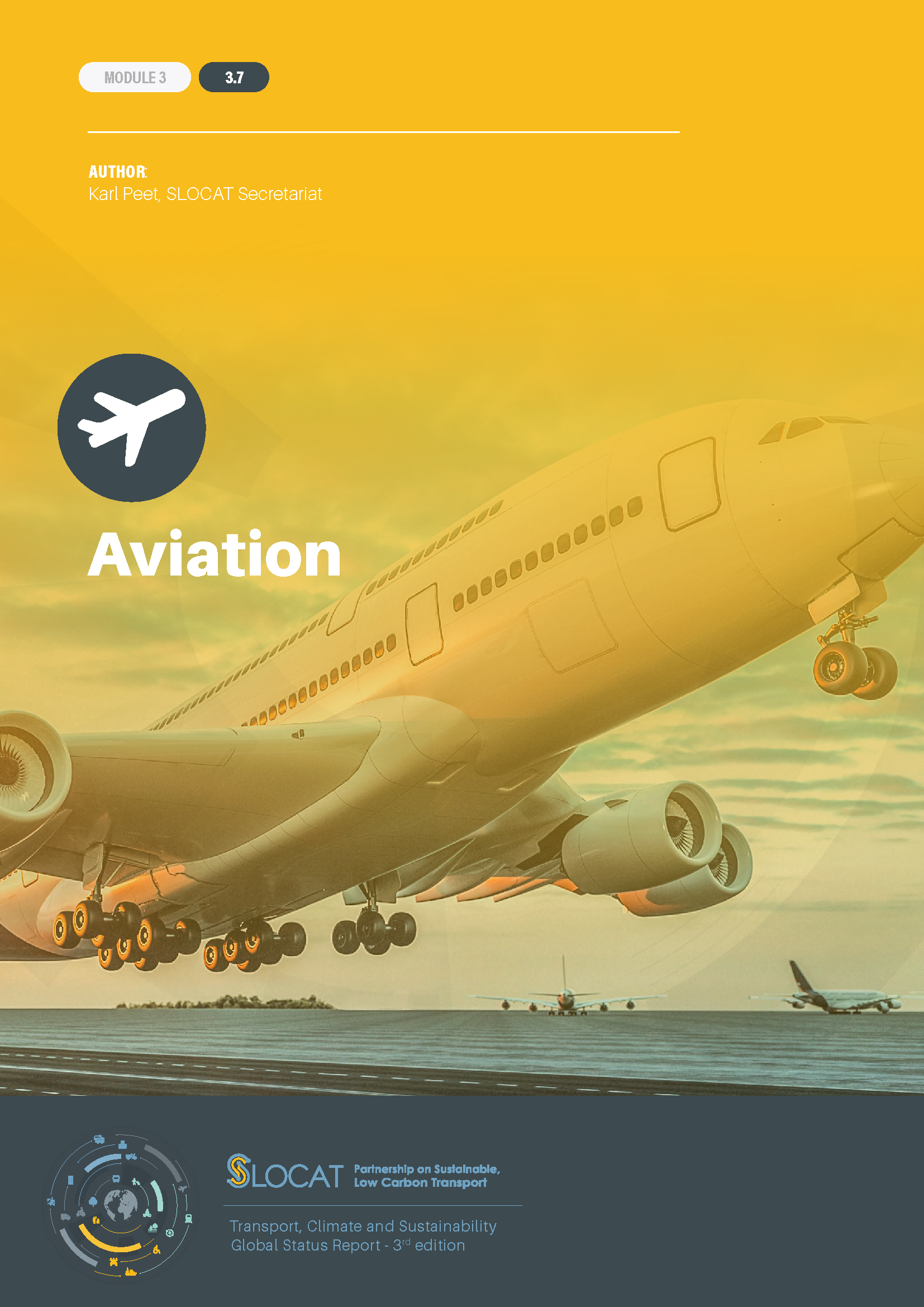-
Aviation
- Key Findings
Demand trends
- Passenger activity contributed more than 70% of aviation-related CO2 emissions in 2019.
- Aviation accounted for less than 1% of global freight activity in 2019 but was responsible for 7% of the carbon dioxide (CO2) emissions from freight transport that year.
- The number of air passengers carried globally grew an estimated 47% in 2022, due to the rapid recovery of international routes following sharp declines early in the COVID-19 pandemic. Air passenger demand was expected to return to pre-pandemic levels in the first quarter of 2023 and to rise 3% above 2019 levels by the end of 2023.
- In March 2022, 36 countries closed their airspace to Russian airlines in reaction to the country’s invasion of Ukraine, with the Russian Federation responding reciprocally. This gave airlines in China, India and the Middle East market advantages over airlines based in Europe and the United States. Aviation emissions are likely to increase significantly as a result.
- Out of an estimated 98.3 million global aviation jobs as of 2020, roughly 40% were lost during the COVID-19 pandemic.
- With the rebound in air travel demand, airlines and airports have experienced inefficiencies that can greatly increase aviation emissions yet are largely avoidable. Inefficiencies include carrying additional fuel on planes to reduce the cost of refuelling at certain airports and increasing flight speeds to compensate for airport delays due to short staffing.
- Jet fuel prices rose to USD 150 per barrel in March 2022, up 39% from the previous month (February 2022) and 121% from the previous year (March 2021).
Emission trends
- As countries emerged from pandemic-related lockdowns, aviation emissions reached around 720 million tonnes in 2021, regaining nearly one-third of the drop that occurred in 2020. Aviation contributed more than 2% of global energy-related emissions in 2021, showing faster emission growth than road, rail or maritime transport.
- Aviation has contributed around 4% to human-induced climate change to date, despite being responsible for only 2.4% of annual global CO2 emissions.
- An estimated 1% of the world’s population accounts for more than half of the total emissions from passenger air travel, and private jet travel has a disproportionate impact on the climate, contributing 4% of global aviation emissions.
- If pre-pandemic growth trends continue, aviation will contribute 6-17% of all greenhouse gas emissions within the carbon budget of scenarios aimed at keeping global temperature rise below 1.5 degrees Celsius (°C) to 2°C. The sector could reduce emissions to meet the targets of the Paris Agreement through 1) a decrease in air travel demand of 2.5% annually with the current fuel composition or 2) a shift to 90% carbon-neutral fuels by 2050.
- Incremental improvements in aircraft fuel efficiency have slowed over time. Even though new aircraft are up to 20% more efficient than models they replace, such improvements have been insufficient to compensate for rising demand.
- Aviation’s CO2 emissions could fall 9% to 94% below 2019 levels by 2050 by scaling up sustainable aviation fuels (SAF), improving operational efficiency and powering aircraft with liquid hydrogen.
- Reductions in air passenger demand due to fuel price increases, a shift from aviation to high-speed rail, reduced business travel and levies on frequent flyers could provide modest emission reductions in certain contexts.
Policy developments
- In October 2022, the member states of the International Civil Aviation Organization adopted a long-term global goal of net zero carbon emissions by 2050, but the goal remains aspirational and is insufficient to meet the targets of the Paris Agreement.
- To align efforts to decarbonise the sector, the International Aviation Climate Ambition Coalition was established at the 2021 United Nations (UN) Climate Change Conference in Glasgow, United Kingdom (COP 26).
- Aviation was identified as of one of the “hard-to-abate” sectors targeted for decarbonisation under the Mitigation Work Programme of the UN Framework Convention on Climate Change, agreed to at the 2022 UN Climate Change Conference in Sharm el-Sheikh, Egypt (COP 27).
- Sustainable aviation fuel accounted for less than 1% of aircraft fuel as of 2023, but scaling up its production to meet global demand is possible by 2040.
- As of 2021, SAF was an estimated two to eight times more expensive to produce than conventional jet fuel, although public and private sector efforts are aligning to make SAF more economical.
- Europe’s largest airlines have lobbied policy makers to weaken the European Union’s ambition on decarbonising aviation, despite companies’ public commitments towards net zero emissions.
- Electric aircraft development has accelerated in numerous countries, spawning new partnerships among established passenger and freight transport providers and emerging technology companies.
- Several emerging companies are developing small and medium-sized aircraft powered by hydrogen fuels.
Author:Karl Peet, SLOCAT Secretariat



